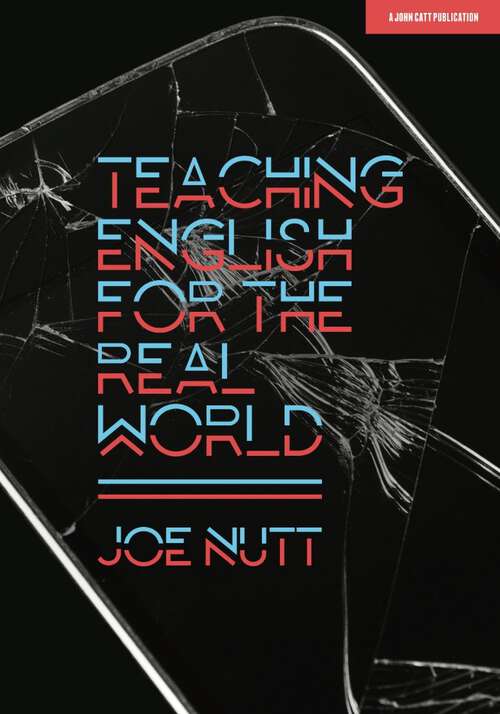Teaching English for the Real World
By:
Sign Up Now!
Already a Member? Log In
You must be logged into UK education collection to access this title.
Learn about membership options,
or view our freely available titles.
- Synopsis
- So much of the teaching in schools of how the English works does not prepare students for the real world. So little has changed in exams, the curriculum, or the way people think about English teaching, in several decades. This book is Joe Nutt's attempt to help schools redress that dramatic imbalance. It's not in any sense a practical teaching guide only for English teachers, nor is it full of hints and tips, lesson plans and schemes of work. Teaching English for the Real World is a far wider consideration of what schools and English teachers should be doing if they wish to prepare secondary school children to be successful and effective users of English, in the real world of work, higher education and adult life they will all too soon enter. If you are an English teacher, by the time you finish reading Teaching English for the Real World, you should be better prepared to deliver lessons that those you teach will forever be grateful for. The book consists of four main sections: English in context, towards the GCSE, choosing texts and technology matters. It starts by putting English clearly into context through a range of current examples. It urges teachers to consider the complex role English usage plays on everything from the side of a bus, through tissue-thin social media, garish slideshows and perky TED talks, to the hundreds of pages of research or official reports so often used as the basis for serious political policy and commercial decision making. It will then examine the classroom status quo and instead of the unrealistic and damaging focus on experiment and creativity, instead of requiring them to write newspaper articles, stories or speeches, the main deliverables in any English GCSE exam, the book will argue that teachers should think carefully about how to connect what children write, with who they are and where they really want to publish. The next section deals with choices of texts. There is a place for children to be taught to write well by example, but there are challenging questions to ask about much of the material routinely chosen. How often are texts and authors selected for study, for reasons that have absolutely nothing whatsoever to do with knowledge or linguistic skill, and everything to do with politics? Even exam boards are guilty of this. The final section examines the relationship between English and the technology real people use to produce it. It reflects on how technology has impacted on the quality of the reading experience itself and argue that there is a crisis in reading in secondary schools, with many children sailing through exams yet leaving school as disinterested and even poor readers. And it suggests how teachers might approach introducing these different risks to children and equip them best to make sound judgements about the way they write and communicate, for personal and employment purposes in adult life.
- Copyright:
- 2020
Book Details
- Book Quality:
- Publisher Quality
- ISBN-13:
- 9781398383531
- Related ISBNs:
- 9781912906956
- Publisher:
- Hodder Education
- Date of Addition:
- 12/14/22
- Copyrighted By:
- Joe Nutt
- Adult content:
- No
- Language:
- English
- Has Image Descriptions:
- No
- Categories:
- Nonfiction, Education, Foreign Language Study
- Reading Age:
- 18 and up
- Submitted By:
- Bookshare Staff
- Usage Restrictions:
- This is a copyrighted book.
